Abstract
In principle, computer-assisted individualization of antibiotic dosing offers the prospect of better patient outcomes through improved dosing precision. In practice, however, the expertise in pharmacokinetics required to operate these programs has precluded their use by most physicians and pharmacists. We developed a computer program for individualization of dosing of aminoglycoside antibiotics under conditions in which access to experts in pharmacokinetics is impractical. The program is accurate, yet it requires less effort for data collection than previous drug dosing programs did. The program generates advice on a broad spectrum of topics, including dose adjustment, interpretation of measured drug concentrations in blood, and recommendations for monitoring drug concentrations. We tested its performance by prospectively comparing it with a clinical pharmacokinetic consultation service in a series of 78 consecutive patients. There were no differences in accuracy or bias in the prediction of drug concentrations. The rate of agreement between the program's dosing recommendations and those of the consultation service was 67 percent. This rate of agreement is typical of interexpert variation. In a stratified set of 24 of the 41 instances with significant disagreement regarding the recommended dose, experts ranked the program's recommendations as highly as those of the consultation service (95% confidence interval for difference in rank, -0.30 less than chi less than 0.47). The results suggest that expert systems can be coupled with pharmacokinetic dosing programs to deliver high-quality clinical recommendations for administration of antimicrobial agents.
Full text
PDF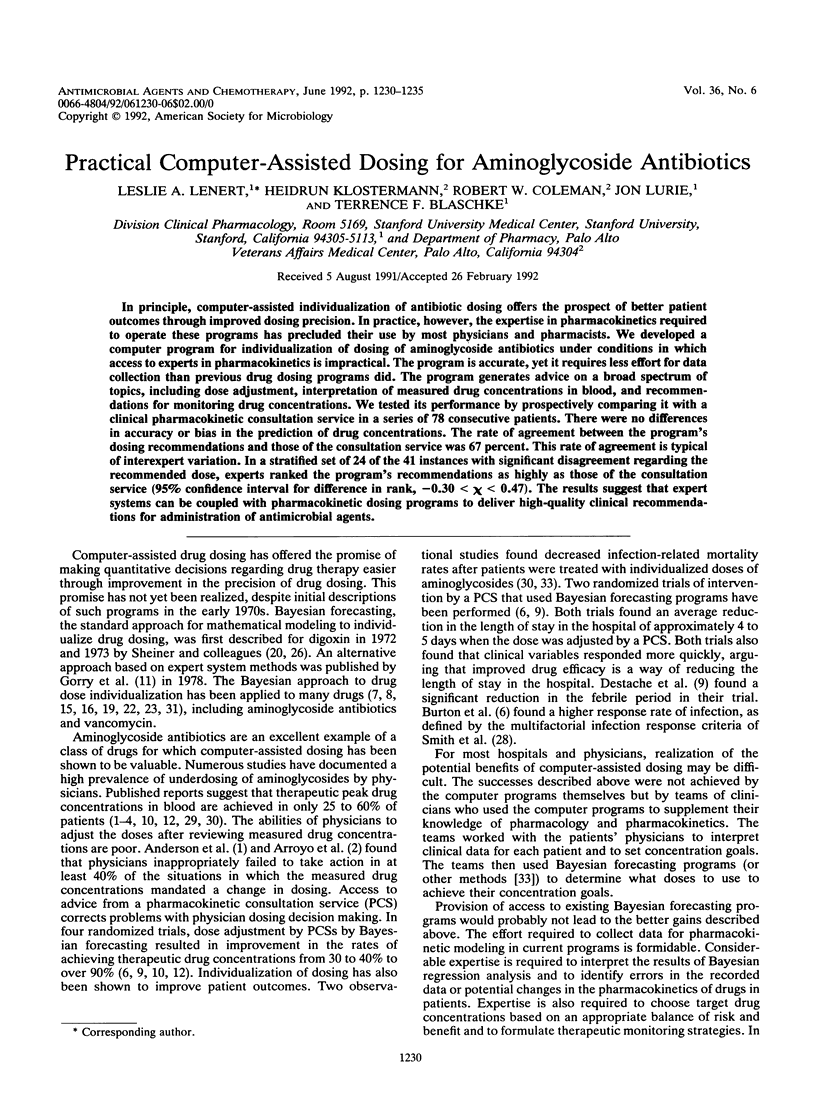
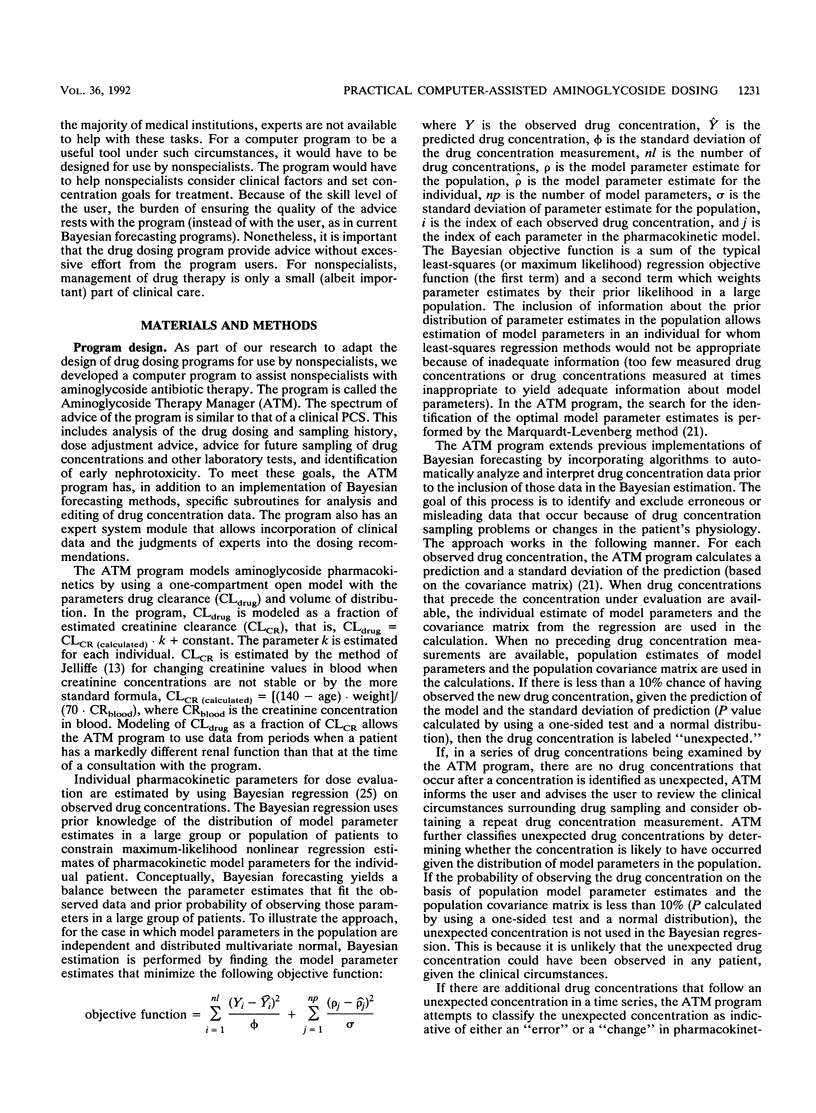
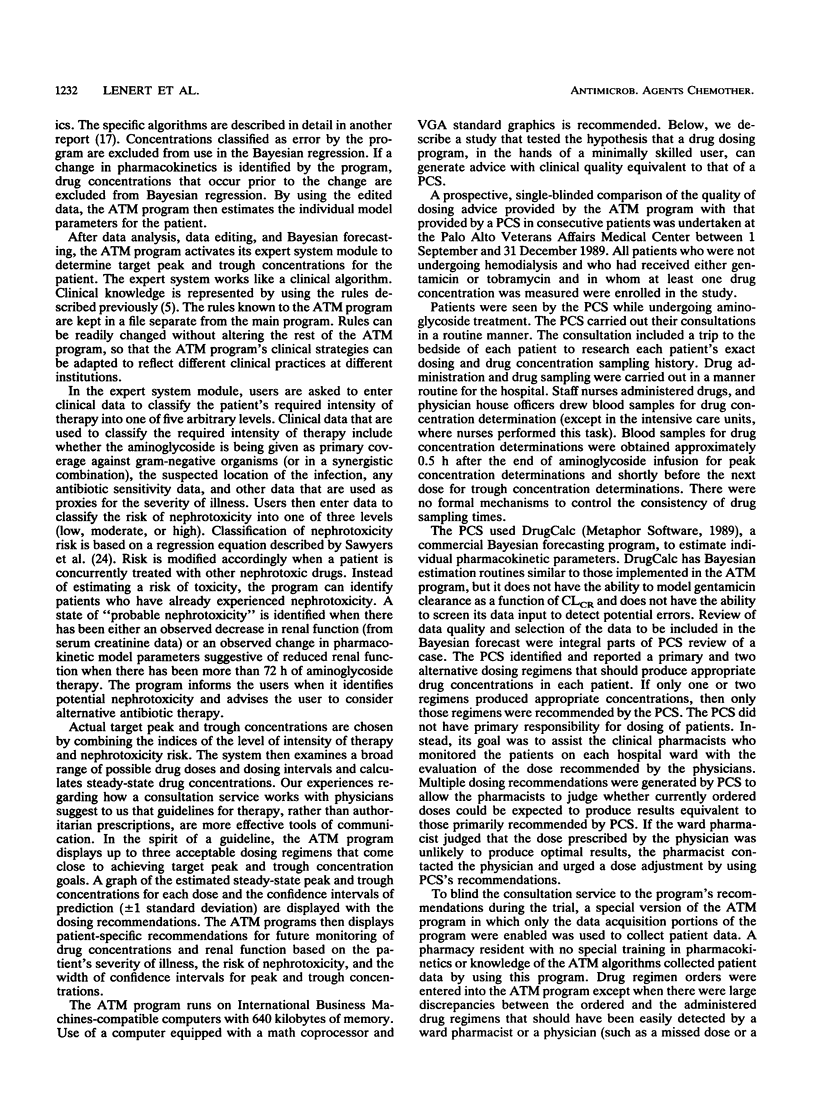
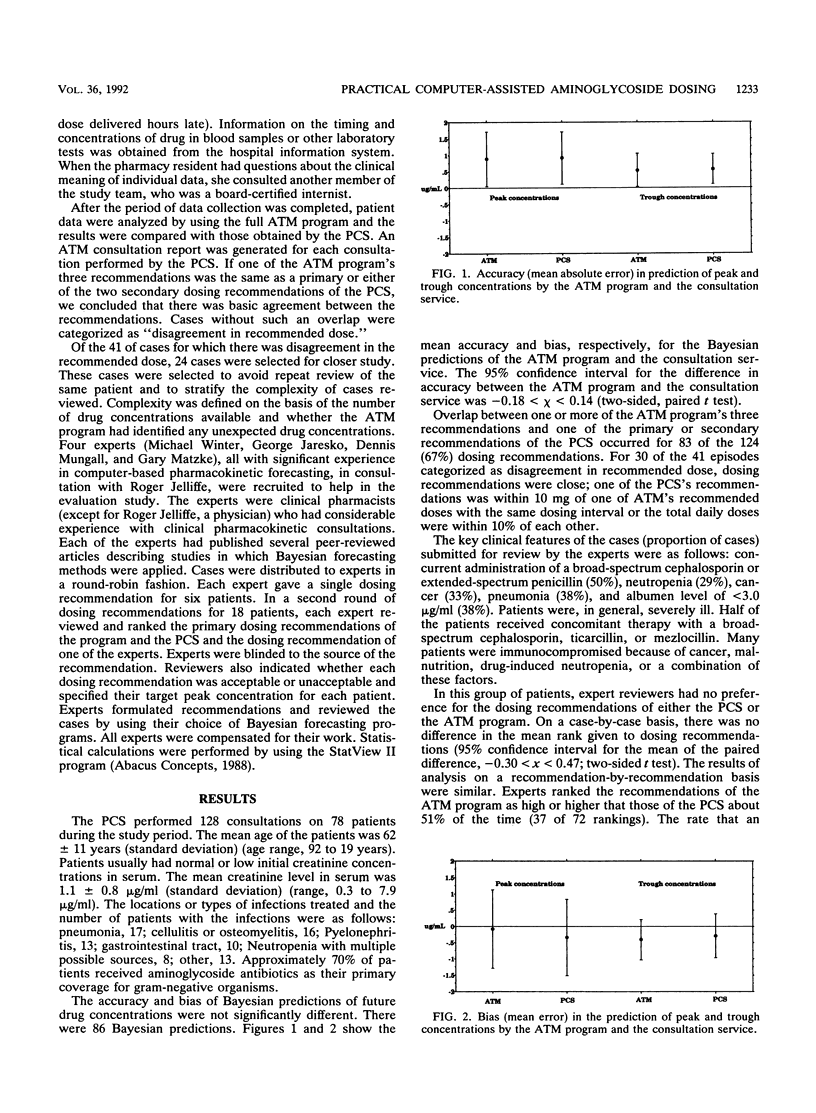
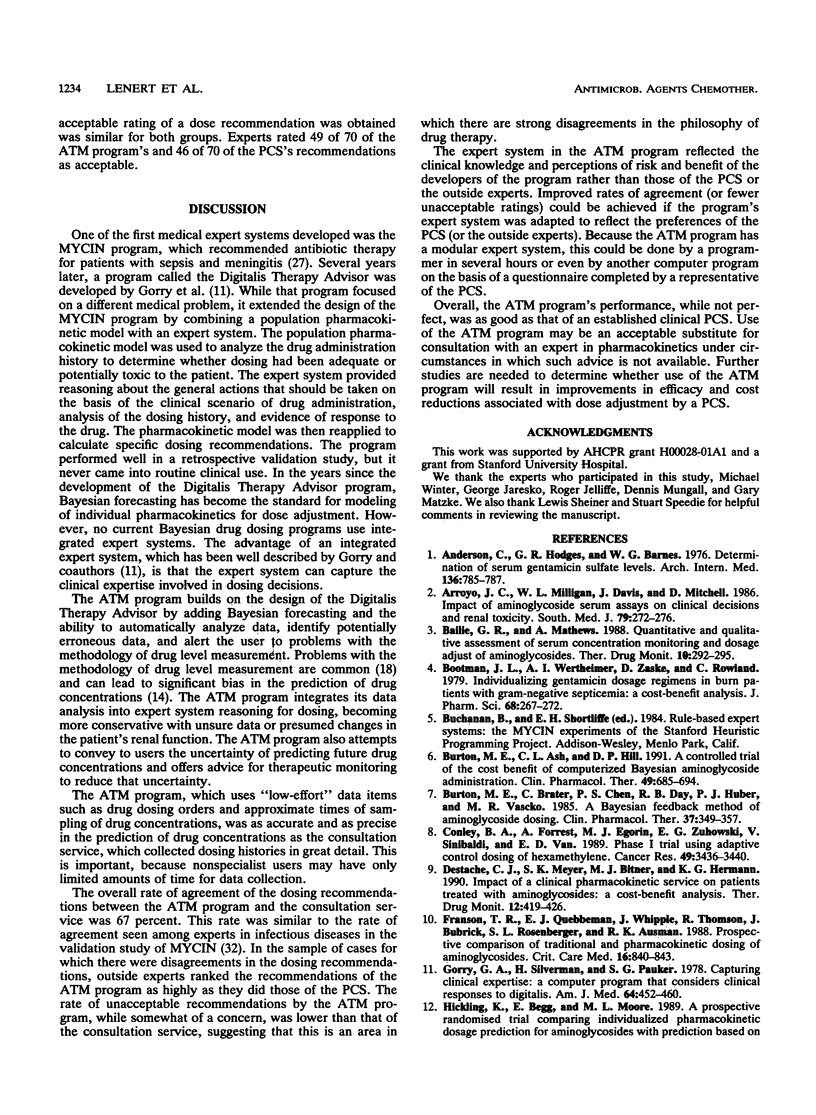
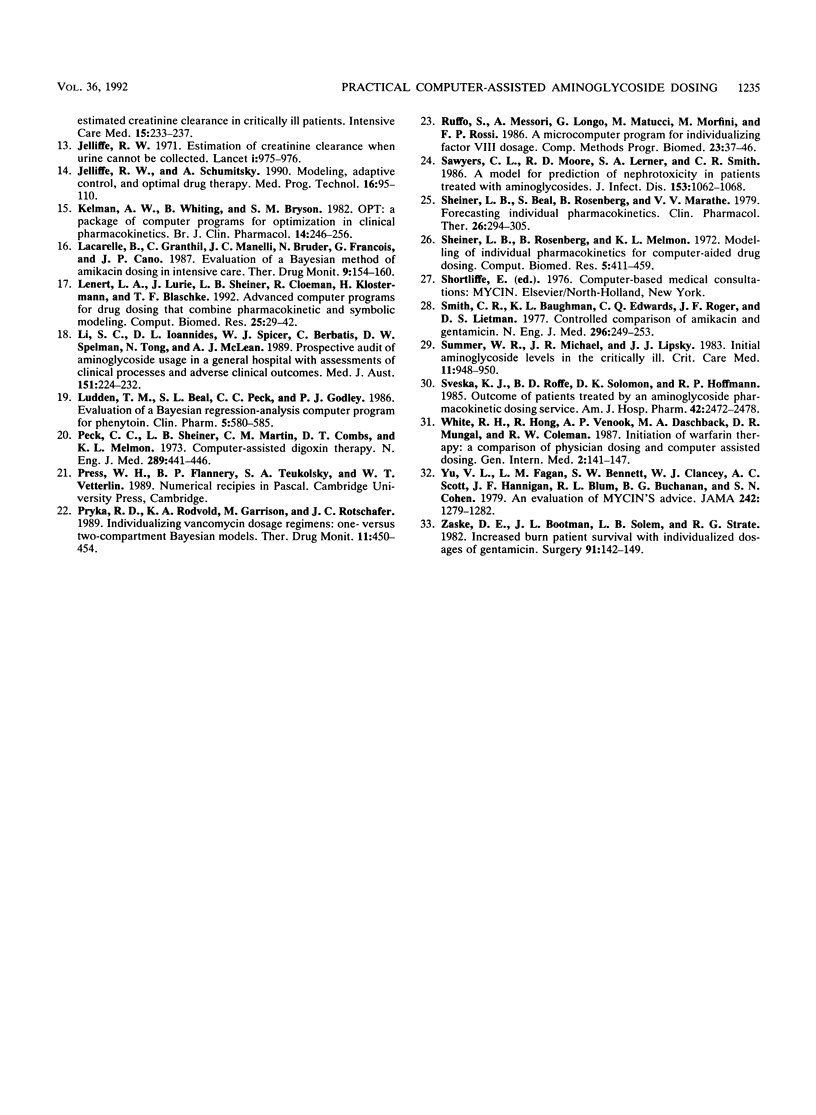
Selected References
These references are in PubMed. This may not be the complete list of references from this article.
- Anderson A. C., Hodges G. R., Barnes W. G. Determination of serum gentamicin sulfate levels: ordering patterns and use as a guide to therapy. Arch Intern Med. 1976 Jul;136(7):785–787. [PubMed] [Google Scholar]
- Arroyo J. C., Milligan W. L., Davis J., Mitchell D. Impact of aminoglycoside serum assays on clinical decisions and renal toxicity. South Med J. 1986 Mar;79(3):272–276. doi: 10.1097/00007611-198603000-00003. [DOI] [PubMed] [Google Scholar]
- Bailie G. R., Mathews A. Quantitative and qualitative assessment of serum concentration monitoring and dosage adjustment of aminoglycosides. Ther Drug Monit. 1988;10(3):292–295. doi: 10.1097/00007691-198803000-00009. [DOI] [PubMed] [Google Scholar]
- Bootman J. L., Wertheimer A. I., Zaske D., Rowland C. Individualizing gentamicin dosage regimens in burn patients with gram-negative septicemia: a cost--benefit analysis. J Pharm Sci. 1979 Mar;68(3):267–272. doi: 10.1002/jps.2600680304. [DOI] [PubMed] [Google Scholar]
- Burton M. E., Ash C. L., Hill D. P., Jr, Handy T., Shepherd M. D., Vasko M. R. A controlled trial of the cost benefit of computerized bayesian aminoglycoside administration. Clin Pharmacol Ther. 1991 Jun;49(6):685–694. doi: 10.1038/clpt.1991.86. [DOI] [PubMed] [Google Scholar]
- Burton M. E., Brater D. C., Chen P. S., Day R. B., Huber P. J., Vasko M. R. A Bayesian feedback method of aminoglycoside dosing. Clin Pharmacol Ther. 1985 Mar;37(3):349–357. doi: 10.1038/clpt.1985.51. [DOI] [PubMed] [Google Scholar]
- Conley B. A., Forrest A., Egorin M. J., Zuhowski E. G., Sinibaldi V., Van Echo D. A. Phase I trial using adaptive control dosing of hexamethylene bisacetamide (NSC 95580). Cancer Res. 1989 Jun 15;49(12):3436–3440. [PubMed] [Google Scholar]
- Destache C. J., Meyer S. K., Bittner M. J., Hermann K. G. Impact of a clinical pharmacokinetic service on patients treated with aminoglycosides: a cost-benefit analysis. Ther Drug Monit. 1990 Sep;12(5):419–426. doi: 10.1097/00007691-199009000-00003. [DOI] [PubMed] [Google Scholar]
- Franson T. R., Quebbeman E. J., Whipple J., Thomson R., Bubrick J., Rosenberger S. L., Ausman R. K. Prospective comparison of traditional and pharmacokinetic aminoglycoside dosing methods. Crit Care Med. 1988 Sep;16(9):840–843. doi: 10.1097/00003246-198809000-00004. [DOI] [PubMed] [Google Scholar]
- Gorry G. A., Silverman H., Pauker S. G. Capturing clinical expertise. A computer program that considers clinical responses to digitalis. Am J Med. 1978 Mar;64(3):452–460. doi: 10.1016/0002-9343(78)90232-2. [DOI] [PubMed] [Google Scholar]
- Hickling K., Begg E., Moore M. L. A prospective randomised trial comparing individualised pharmacokinetic dosage prediction for aminoglycosides with prediction based on estimated creatinine clearance in critically ill patients. Intensive Care Med. 1989;15(4):233–237. doi: 10.1007/BF00271057. [DOI] [PubMed] [Google Scholar]
- Jelliffe R. W. Estimation of creatinine clearance when urine cannot be collected. Lancet. 1971 May 8;1(7706):975–976. doi: 10.1016/s0140-6736(71)91484-x. [DOI] [PubMed] [Google Scholar]
- Jelliffe R. W., Schumitzky A. Modeling, adaptive control, and optimal drug therapy. Med Prog Technol. 1990 May;16(1-2):95–110. [PubMed] [Google Scholar]
- Kelman A. W., Whiting B., Bryson S. M. OPT: a package of computer programs for parameter optimisation in clinical pharmacokinetics. Br J Clin Pharmacol. 1982 Aug;14(2):247–256. doi: 10.1111/j.1365-2125.1982.tb01969.x. [DOI] [PMC free article] [PubMed] [Google Scholar]
- Lacarelle B., Granthil C., Manelli J. C., Bruder N., Francois G., Cano J. P. Evaluation of a Bayesian method of amikacin dosing in intensive care unit patients with normal or impaired renal function. Ther Drug Monit. 1987 Jun;9(2):154–160. doi: 10.1097/00007691-198706000-00005. [DOI] [PubMed] [Google Scholar]
- Lenert L. A., Lurie J., Sheiner L. B., Coleman R., Klostermann H., Blaschke T. F. Advanced computer programs for drug dosing that combine pharmacokinetic and symbolic modeling of patients. Comput Biomed Res. 1992 Feb;25(1):29–42. doi: 10.1016/0010-4809(92)90033-7. [DOI] [PubMed] [Google Scholar]
- Li S. C., Ioannides-Demos L. L., Spicer W. J., Berbatis C., Spelman D. W., Tong N., McLean A. J. Prospective audit of aminoglycoside usage in a general hospital with assessments of clinical processes and adverse clinical outcomes. Med J Aust. 1989 Aug 21;151(4):224–232. doi: 10.5694/j.1326-5377.1989.tb115996.x. [DOI] [PubMed] [Google Scholar]
- Ludden T. M., Beal S. L., Peck C. C., Godley P. J. Evaluation of a Bayesian regression-analysis computer program for predicting phenytoin concentration. Clin Pharm. 1986 Jul;5(7):580–585. [PubMed] [Google Scholar]
- Peck C. C., Sheiner L. B., Martin C. M., Combs D. T., Melmon K. L. Computer-assisted digoxin therapy. N Engl J Med. 1973 Aug 30;289(9):441–446. doi: 10.1056/NEJM197308302890902. [DOI] [PubMed] [Google Scholar]
- Pryka R. D., Rodvold K. A., Garrison M., Rotschafer J. C. Individualizing vancomycin dosage regimens: one- versus two-compartment Bayesian models. Ther Drug Monit. 1989;11(4):450–454. [PubMed] [Google Scholar]
- Ruffo S., Messori A., Longo G., Matucci M., Morfini M., Rossi-Ferrini P. A microcomputer program for individualizing factor VIII dosage in hemophilia patients undergoing major surgery. Comput Methods Programs Biomed. 1986 Aug;23(1):37–46. doi: 10.1016/0169-2607(86)90078-7. [DOI] [PubMed] [Google Scholar]
- Sawyers C. L., Moore R. D., Lerner S. A., Smith C. R. A model for predicting nephrotoxicity in patients treated with aminoglycosides. J Infect Dis. 1986 Jun;153(6):1062–1068. doi: 10.1093/infdis/153.6.1062. [DOI] [PubMed] [Google Scholar]
- Sheiner L. B., Beal S., Rosenberg B., Marathe V. V. Forecasting individual pharmacokinetics. Clin Pharmacol Ther. 1979 Sep;26(3):294–305. doi: 10.1002/cpt1979263294. [DOI] [PubMed] [Google Scholar]
- Sheiner L. B., Rosenberg B., Melmon K. L. Modelling of individual pharmacokinetics for computer-aided drug dosage. Comput Biomed Res. 1972 Oct;5(5):411–459. doi: 10.1016/0010-4809(72)90051-1. [DOI] [PubMed] [Google Scholar]
- Summer W. R., Michael J. R., Lipsky J. J. Initial aminoglycoside levels in the critically ill. Crit Care Med. 1983 Dec;11(12):948–950. doi: 10.1097/00003246-198312000-00011. [DOI] [PubMed] [Google Scholar]
- Sveska K. J., Roffe B. D., Solomon D. K., Hoffmann R. P. Outcome of patients treated by an aminoglycoside pharmacokinetic dosing service. Am J Hosp Pharm. 1985 Nov;42(11):2472–2478. [PubMed] [Google Scholar]
- White R. H., Hong R., Venook A. P., Daschbach M. M., Murray W., Mungall D. R., Coleman R. W. Initiation of warfarin therapy: comparison of physician dosing with computer-assisted dosing. J Gen Intern Med. 1987 May-Jun;2(3):141–148. doi: 10.1007/BF02596140. [DOI] [PubMed] [Google Scholar]
- Yu V. L., Fagan L. M., Wraith S. M., Clancey W. J., Scott A. C., Hannigan J., Blum R. L., Buchanan B. G., Cohen S. N. Antimicrobial selection by a computer. A blinded evaluation by infectious diseases experts. JAMA. 1979 Sep 21;242(12):1279–1282. [PubMed] [Google Scholar]
- Zaske D. E., Bootman J. L., Solem L. B., Strate R. G. Increased burn patient survival with individualized dosages of gentamicin. Surgery. 1982 Feb;91(2):142–149. [PubMed] [Google Scholar]


